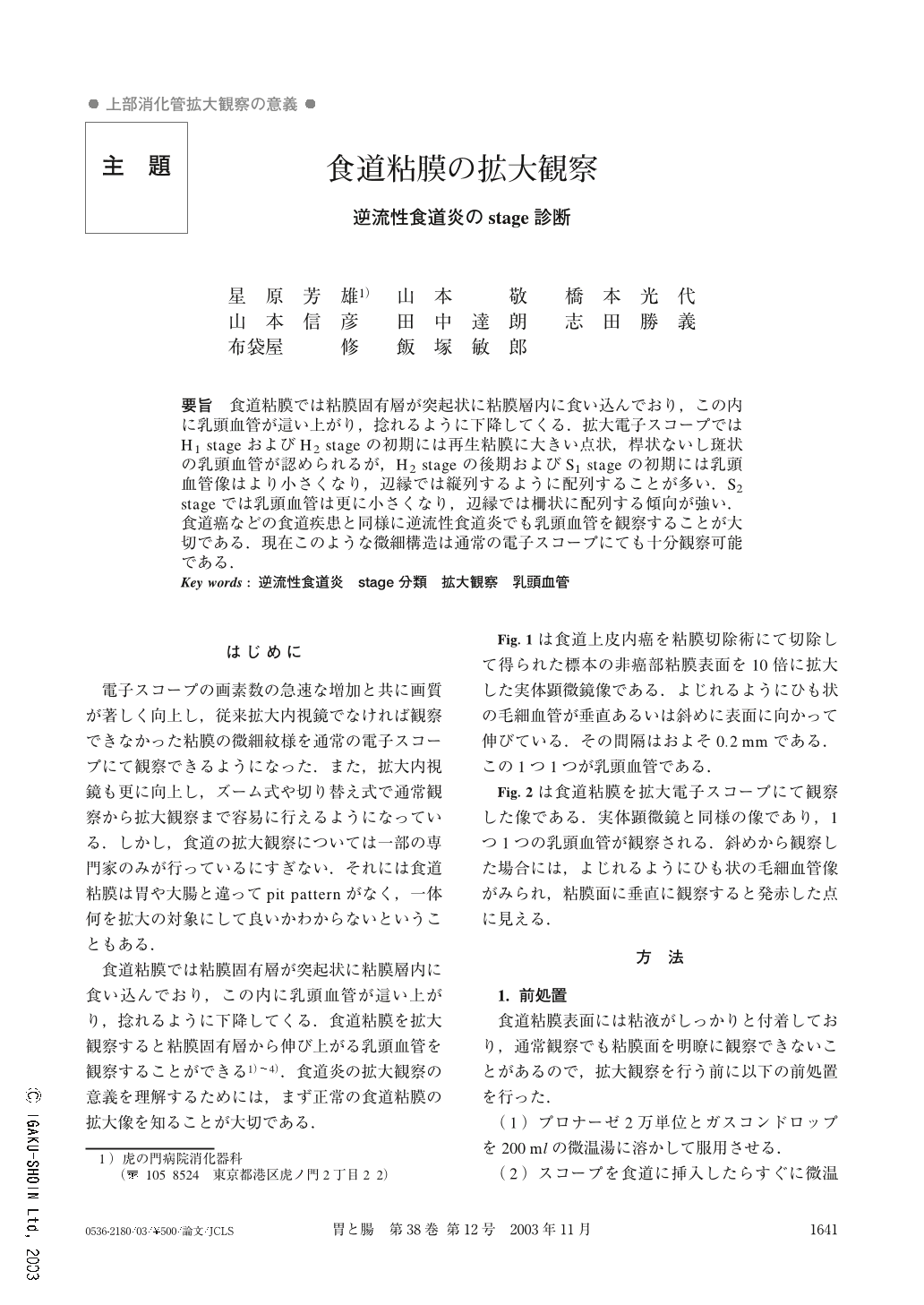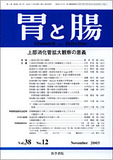Japanese
English
- 有料閲覧
- Abstract 文献概要
- 1ページ目 Look Inside
- 参考文献 Reference
要旨 食道粘膜では粘膜固有層が突起状に粘膜層内に食い込んでおり,この内に乳頭血管が這い上がり,捻れるように下降してくる.拡大電子スコープではH1 stageおよびH2 stageの初期には再生粘膜に大きい点状,桿状ないし斑状の乳頭血管が認められるが,H2 stageの後期およびS1 stageの初期には乳頭血管像はより小さくなり,辺縁では縦列するように配列することが多い.S2 stageでは乳頭血管は更に小さくなり,辺縁では柵状に配列する傾向が強い.食道癌などの食道疾患と同様に逆流性食道炎でも乳頭血管を観察することが大切である.現在このような微細構造は通常の電子スコープにても十分観察可能である.
Intra-papillary capillary loops (shortened as IPCLs) can be found in the esophageal mucosa by using a magnification endoscope. The Los Angeles classification is used as that of reflux esophagitis in general, but the stage classification according to the width of the ulceration and the length of the regenerated mucosa is more useful for observation with magnification endoscopy. Magnification endoscopy showed IPCLs were large round or rod-sharp in A2 and H1 stage reflux esophagitis. The vessels in H2 and S1 stages were similar in pattern to those in A2 and H1 stage, but smaller than those in H1 stage. In some esophageal erosions or ulcers they formed in line toward their center esophageal erosion or ulcer. Their sizes became similar to those of the surrounding normal mucosa as the healing process progressed. These vessels are thought to supply blood to the surrounding mucosal layer and play an important role in the repair of reflux esophagitis.

Copyright © 2003, Igaku-Shoin Ltd. All rights reserved.


